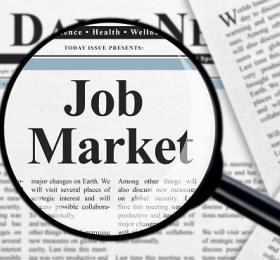
The recovery continues in the US labor market. Employers added nearly 1.4 million jobs in the month of August. Meanwhile, the official unemployment rate fell to 8.4% from its reading in July of 10.2%. Labor force participation firmed to 61.7% and U6 fell ~2.3% to 14.2%. While the BLS revised previously reported July wage gains lower, August showed a strong increase of 0.4% MoM (and 4.7% YoY) as the average American workweek clocked in at 34.6 hours. Census 2020 hiring helped government payrolls expand by ~344,000. On the private side of the payroll ledger, retail and leisure and hospitality lead job gains, adding 248,900 and 174,000 respectively. There is still plenty of work to do, but August represents another step in the right direction for the American job market.
Notwithstanding a strong payrolls report, August was essentially all about the Federal Reserve. Culminating in a “profoundly consequential” speech, August Fed speak continued to indicate a repugnance for negative rates and a resistance to yield curve control. It seems clear at this stage that Jay Powell will do “whatever it takes” to sustain the recovery, but he would like a bit of assistance fiscally from Congress. While he has delicately pushed the envelope a bit in recent weeks, he has not pounded the table in favor of a large fiscal stimulus package. The Fed would prefer to maintain the zero bound for rates (zero interest rate policy aka “ZIRP”) and stoke inflation expectations through a more “inclusive” economic recovery. To be sure, the data are improving but not at such a rate that we can truly call the FOMC’s actions “stimulative.” Rather the Federal Reserve is doing its best to play a vital role in this recovery. Mr. Powell’s Jackson Hole speech moved the goal posts for inflation, but we remain uncertain that he has in fact made the Fed’s 2% goal more attainable.
The Fed’s objectives pertain to price stability and full employment. As a result its primary policy tools have historically been short term rates (i.e. fed funds rate) and more recently its balance sheet. During the month of August, the FOMC noted the evolution of the virus- specifically, its severity and durability. In response the Federal Reserve has essentially pegged its policy decisions to the path of the virus itself. Mary Daly of the San Francisco Fed intimated her worry about the possibility of a double dip recession should the fall months prove a greater challenge than expected to contain the spread of COVID-19. In order to preserve the form and function of financial markets, the Fed has demonstrated its ability to act with force (and even step over a few “red lines”). We would also note that Jay Powell and his cohorts are even testing a digital dollar.
The November election is on the horizon and we expect a number of political punches to be thrown between now and then. Meanwhile, the novel coronavirus continues to crop up in various parts of the nation- most recently in the Midwest. The CDC has instructed states to be prepared for a vaccine rollout as soon as November 1 (and we certainly hope for more good news on that front) , but with equity valuations stretched, the disparity between growth and value widening to extremes, and little sign of consensus on a stimulus package we are hesitant to rerate our view on stocks without more clarity regarding the path of future growth.
Market Outlook: Bearish USD, Neutral Duration, Neutral Equities
News Release: Bureau of Labor Statistics (The Employment Situation- August 2020)